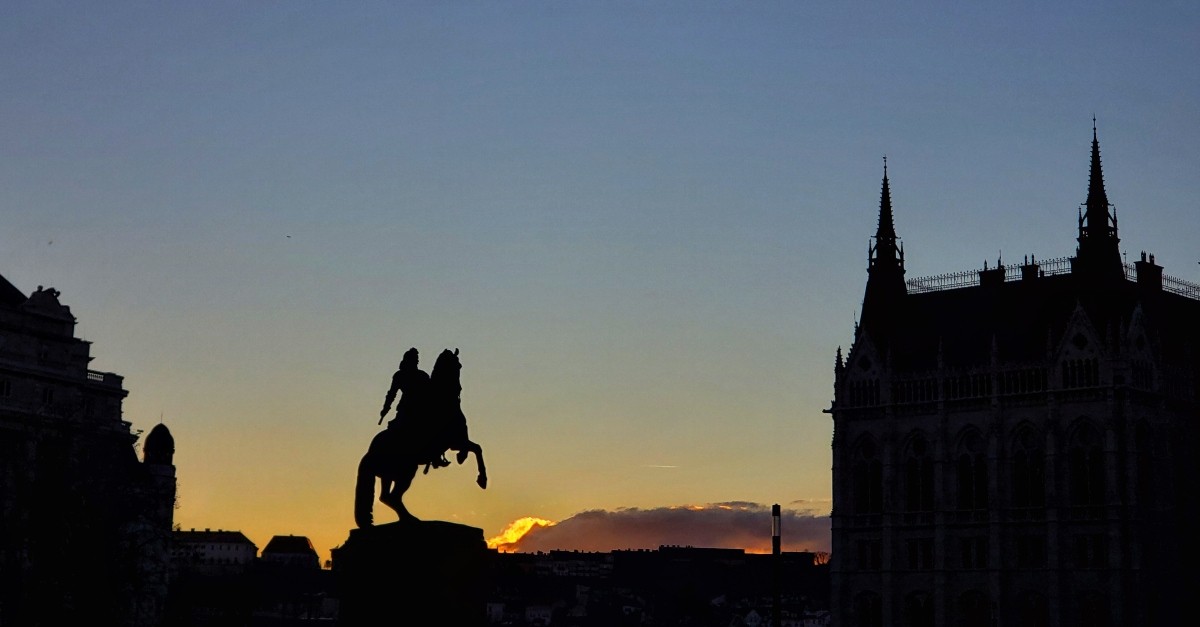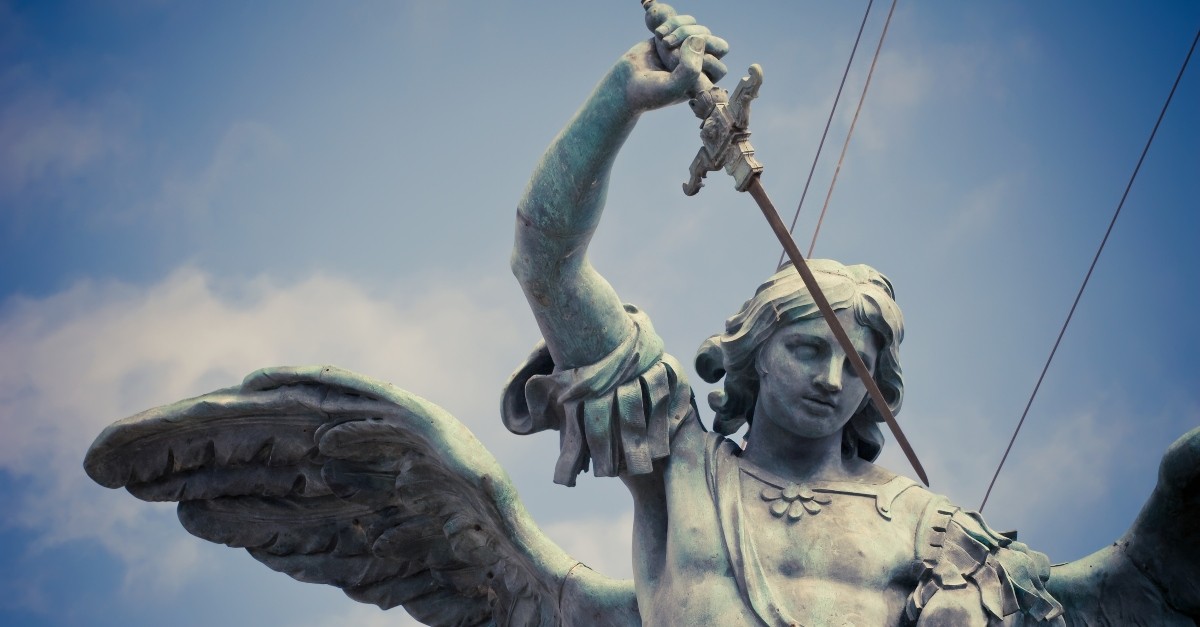
The Bible is the written Word of God, Spirit-inspired and authoritative in all it teaches. The wisdom it brings comes from another realm, the eternal. As such, human language proves limited to express heavenly reality.
With this in mind, God often communicates truth through pictures and stories instead of direct teaching. The Bible can say, “God is love,” but a story about the Father and a prodigal son brings us into the story in a way that statement can’t. Pictures do the same thing. Famously, Fred Barnard said, “A picture is worth a thousand words,” in advertising in the 1920s.
During the Babylonian exile, God anoints a young Jewish boy, Daniel, with gifts and a great purpose. Daniel interpreted dreams and then had his own visions. These bore witness to a greater Kingdom to come while he was enslaved by an earthly empire. In some ways, Daniel influences the New Testament more than any other Old Testament book — how to live in Kingdom victory while under the injustice of an oppressive empire. In the New Testament, we see Christians suffering under Rome. And many Christians throughout history and today find themselves in similar circumstances; we are in this world but not of it.
Therefore, the book of Daniel speaks to us today. Here are seven powerful symbols in the book of Daniel.
Photo credit: ©Getty Images/WLDavies

1. Statue in Nebuchadnezzar’s Dream
Soon after a young Daniel was enslaved in Babylon, King Nebuchadnezzar had a dream (Daniel 2). The king saw a massive statue made of different materials, head to toe. The golden head represented Babylon, the beginning of great empires. The silver chest and arms represent the next Medo-Persian empire. The bronze belly and thighs symbolize the coming Greek Empire. The legs of iron were the Romans. The feet show a divided kingdom, iron mixed with clay, which happened as Rome fell and splintered.
This dream greatly disturbed the king, and he sought wisdom from his counselors. He wanted them to tell him the dream and its meaning, but none could. Daniel prayed, and God gave him the dream and its interpretation.
Given during the midst of Babylon’s power, the vision shows a specific future, fulfilled in every way. God reveals his authority and power over history. Empires rise and fall by his will. Babylon seemed all-powerful and invincible, but no worldly empire would last forever. King Nebuchadnezzar’s reign existed for an appointed time in God’s redemptive plan, only temporarily. No matter how powerful a nation might seem, they eventually fall or are conquered by another, as Babylon was conquered by the Medes and Persians. The Greeks later defeated the Persians, and so on.
We learn how even our own governments and leaders exist at God’s allowance, and they will one day fall or be replaced, too. This teaches us the need for a greater, eternal kingdom. Thankfully, God provides that in the dream, too.
Photo credit: ©Getty Images/Oliver Kramm / EyeEm

2. The Kingdom Stone
At the end of Nebuchadnezzar’s dream in Daniel 2, a huge stone enters the picture and smashes the statue to dust, leaving it meaningless. This final image likely disturbed the king more than anything else.
The statue had been crafted from gold, silver, and other precious metals, and they represented human empires. In contrast, the stone is organic; no human hands constructed it. The stone represents the Kingdom of God, and it doesn’t come from any human ability or effort. The kingdom stone was thrown from heaven, illustrating that God alone establishes his kingdom — a living, divine, eternal realm and culture greater than anything people can come up with.
The stone smashes the statue at the feet, during the time of Rome, but decimates the entire thing. Every earthly empire will fall. But the Kingdom of God will grow into a great mountain and fill the whole earth. It won’t be replaced or conquered.
The image points forward to Christ, the stone rejected by men but chosen by God, the cornerstone. Jesus arrived under Roman rule and preached, “Repent for the Kingdom of God is at hand” (Matthew 4:17). He taught about the Kingdom in parables. Christ established the Kingdom, not through force and violence, but love and compassion through his life, death, and resurrection.
Even today, we have received and entered this Kingdom by being born again (John 3). God’s Kingdom will spread and fill the whole earth. It will reach its final fulfilment when Jesus returns in the future.
Photo credit: ©Getty Images/nathan4847

3. The Fiery Furnace
Interestingly, Nebuchadnezzar hears the interpretation of the dream and gives Daniel more authority. However, he literally builds a large golden statue in his own image (similar to the one destroyed in the dream) and commands everyone to bow down to it (Daniel 3). Three young Jewish men, friends of Daniel, refuse to worship the idol. The consequence for not bowing to the statue was arrest and being thrown into a fiery furnace: a death sentence.
The furnace represents the world’s command and strategy to destroy faith, to get believers to worship a lie through fear and force. Since the world doesn’t have the eternal perspective, they can only get their way through violence. Yet God remains with his people through the fiery trials.
After the three young men were thrown into the flames, Nebuchadnezzar sees a fourth figure with them, “like a son of the gods.” Many believe this figure to be Christ or an angel, representing how God’s divine presence protects and empowers believers through a world and spiritual enemy that seeks to steal, kill, and destroy. The fire should have killed them, but they emerged unharmed and free, their bonds burned away. The flames that should have consumed them set them free.
We still encounter resistance and persecution from governments and powers of this world. Yet God’s promise remains. He will be with us always, sustaining us as we stand in truth against the lies of the enemy.
Photo credit: ©Getty Images/Kesu01

4. Tree in Nebuchadnezzar’s Second Dream
As a result of his pride, God sends Nebuchadnezzar another dream (Daniel 4). This time, the king sees a big tree reaching to the skies. The whole world views this tree, and it provides shelter and food for beasts, birds, and people. Yet a heavenly messenger or angel commands the tree be cut down. In the end, only a stump is left, and it’s chained with iron and bronze.
Daniel once again gives the interpretation. The tree symbolized Nebuchadnezzar and his empire. Allowed by God, the Lord holds the king accountable. The empire should have been a place of rest and peace, but the king’s arrogance led to injustice. God decides to humble Nebuchadnezzar, but he leaves a stump. Restoration would be possible after repentance.
After the interpretation, Daniel instructs the king to humble himself, recognize Yahweh’s ultimate authority, and end his injustice. But Nebuchadnezzar ignores the caution. A year later, the king declares his own greatness, and God removes his sanity. Nebuchadnezzar lives like an animal for seven years. Ultimately, God restores his mind and kingdom. Nebuchadnezzar issues a decree that God alone has power and authority.
For us today, we learn how God gives favor to the humble and those who use leadership for the good of others. True greatness recognizes God as the source of all good and authority, and we will be held accountable by him for our choices. Even if we stray, however, repentance and restoration is possible with God.
Photo credit: Unsplash/Annie Spratt

5. Son of Man
Later in his life, Daniel begins having his own visions instead of interpreting the dreams of others. In Daniel 7, he sees an image of four horrible beasts, each representing a powerful empire. The creatures emerge from the sea, which symbolizes chaos and death. But then the vision shows Daniel “one like a son of man” coming with the clouds of heaven. The Son of Man is different than the beasts — he is human and glorious. He goes to the Ancient of Days (God) and receives authority, glory, and an everlasting kingdom.
The Son of Man is a perfect leader who rules by peace and godly righteousness. Unlike the beastly empires, his kingdom will never pass away or be destroyed. The Son of Man brings eternal peace and justice in his forever reign.
Jesus frequently called himself the “Son of Man” more than any other title, pointing to the reality that he fulfills Daniel’s vision as a divine ruler. And since the Jews knew the reference, looking for the coming Messiah as such, this regularly upset the religious leaders. At Jesus’ trial, Christ directly quotes from Daniel 7, saying the religious leaders will see “the Son of Man seated at the right hand of Power and coming with the clouds of heaven” (Mark 14:62). To the Jewish leaders, this crossed the line, and they condemn him to death.
Like the statue dream, Christ is our king, the Lord of Lords over all the earth, inviting us into a peaceful, eternal Kingdom now which will one day see its fulfillment in a new heaven and earth.
Photo credit: ©Getty Images/artplus

6. 70 Weeks
The Jews of Jesus’ day referred to Daniel because much of his prophecy proved true, especially about the kingdoms and empires rising after Babylon and Persia. Therefore, the Jews looked for other fulfillments from Daniel’s writings.
The 70 weeks prophecy in Daniel 9 points directly to the coming Messiah and redemptive plan of God. The angel Gabriel tells Daniel that 70 weeks have been appointed for God’s people, to bring an end to sin, repent from wickedness, and bring in a new kingdom of righteousness. The Jews culturally interpreted the “weeks” as sets of seven years.
They saw a fulfillment in the first seven weeks (49 years) when Persia allowed the Jews to return and rebuild the temple and walls of Jerusalem. They then saw the next 434 years (62 weeks) as the timeline to wait for the coming Messiah, the Christ or “Anointed One.” The prophecy includes how the Anointed One will be “cut off,” not for his sins but for the people. The final week contains a new covenant, the end of sacrifice, and abominations in the temple.
As we can imagine, the Jews looked for the Messiah during the time of Jesus, which was generally 400 plus years after the return of the Jews to Jerusalem. Jesus fulfilled these prophetic events and purposes in the right time. He died for sins, was raised again, and established a new covenant which brought an end to the Old Testament sacrifices with his own death on the cross.
Photo credit: ©Getty Images/Chainarong Prasertthai

7. The Archangel Michael and the End Times
The angel Gabriel shows up in Daniel, who also appears later in the Gospels. And in Daniel 10-12 we get the other major angel, Michael. He becomes a powerful figure symbolizing God’s protection over his people and leading to end times prophecy.
In Daniel 10, an angel tells Daniel how demonic forces (known as “the prince of Persia” and the “prince of Greece”) resist God’s will in the spiritual realm. Michael, a godly “chief prince,” arrives to help. The idea of spiritual warfare and prayer is a theme in the New Testament, seen here with Daniel, demonic opposition, and Michael as a heavenly warrior.
Michael again fights during a time of crisis (Daniel 12:1), a moment interpreted as part of the final days. Michael protects God’s people, and the dead are raised, some to eternal life and others to destruction. We see these themes later in the book of Revelation, where Michael again shows up to lead the heavenly armies against the dragon, Satan (Revelation 12). He casts the enemy out of heaven. In both Daniel and Revelation, Michael symbolizes God’s power and care to defend his people.
Together, these visions teach us that God doesn’t leave us alone, nor does he forsake us, even during times of great crisis. These crises can be political or spiritual, but God’s presence will see us through the trials and reveal his victory over evil. Resurrection and eternal life wait for us at the end of our journey.
Photo credit: ©Getty Images/Moosy Elk

Originally published Friday, 16 May 2025.
